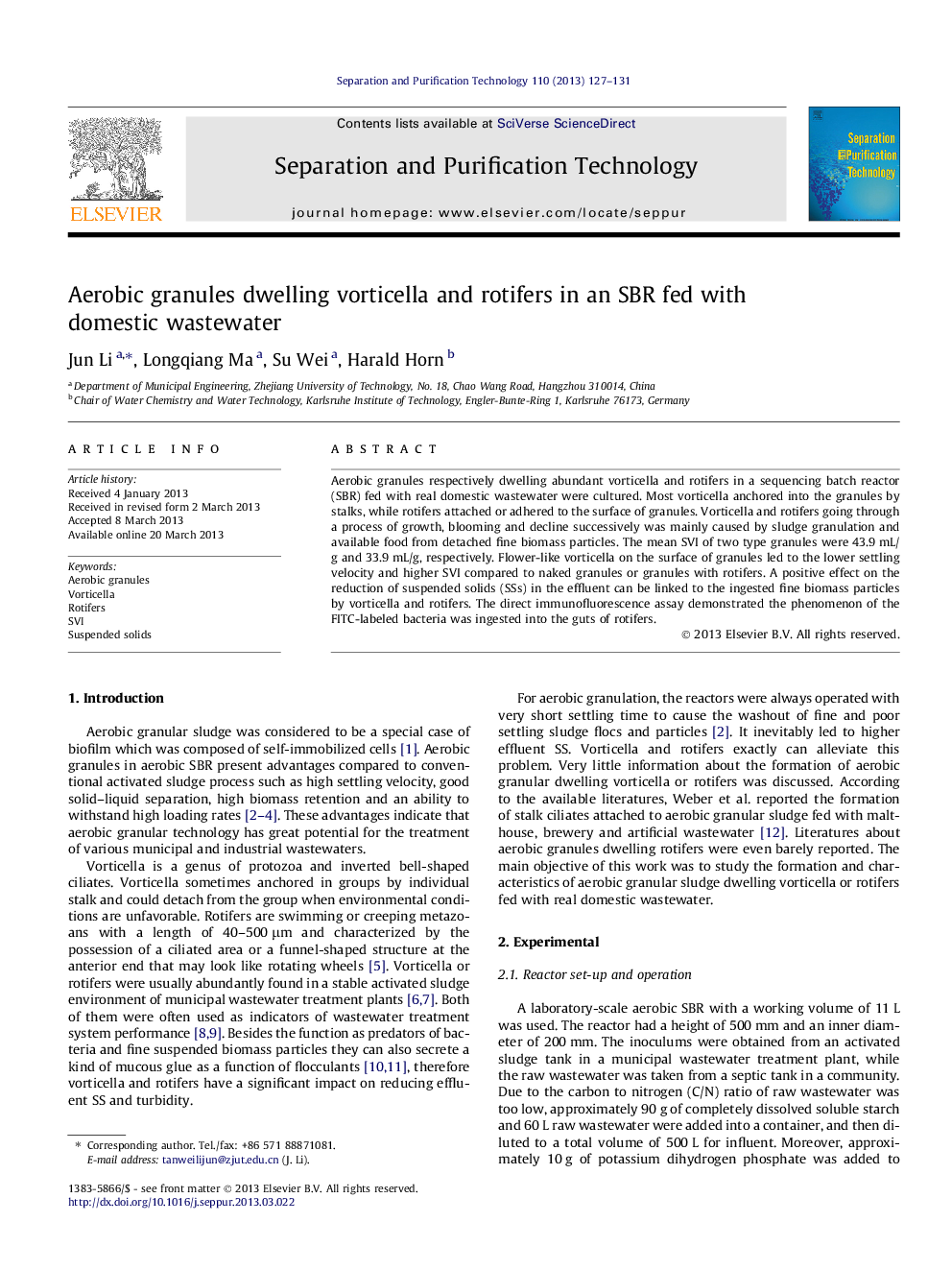| Article ID | Journal | Published Year | Pages | File Type |
|---|---|---|---|---|
| 641702 | Separation and Purification Technology | 2013 | 5 Pages |
•The impact of both vorticella and rotifers on aerobic granules performance is shown.•Vorticella and rotifers do develop in different phases along the aerobic granulation.•Both vorticella and rotifers improve the removal of SS and the effluent quality.•The ingestion of suspended material by rotifers is shown with FITC-labeled bacteria.
Aerobic granules respectively dwelling abundant vorticella and rotifers in a sequencing batch reactor (SBR) fed with real domestic wastewater were cultured. Most vorticella anchored into the granules by stalks, while rotifers attached or adhered to the surface of granules. Vorticella and rotifers going through a process of growth, blooming and decline successively was mainly caused by sludge granulation and available food from detached fine biomass particles. The mean SVI of two type granules were 43.9 mL/g and 33.9 mL/g, respectively. Flower-like vorticella on the surface of granules led to the lower settling velocity and higher SVI compared to naked granules or granules with rotifers. A positive effect on the reduction of suspended solids (SSs) in the effluent can be linked to the ingested fine biomass particles by vorticella and rotifers. The direct immunofluorescence assay demonstrated the phenomenon of the FITC-labeled bacteria was ingested into the guts of rotifers.
